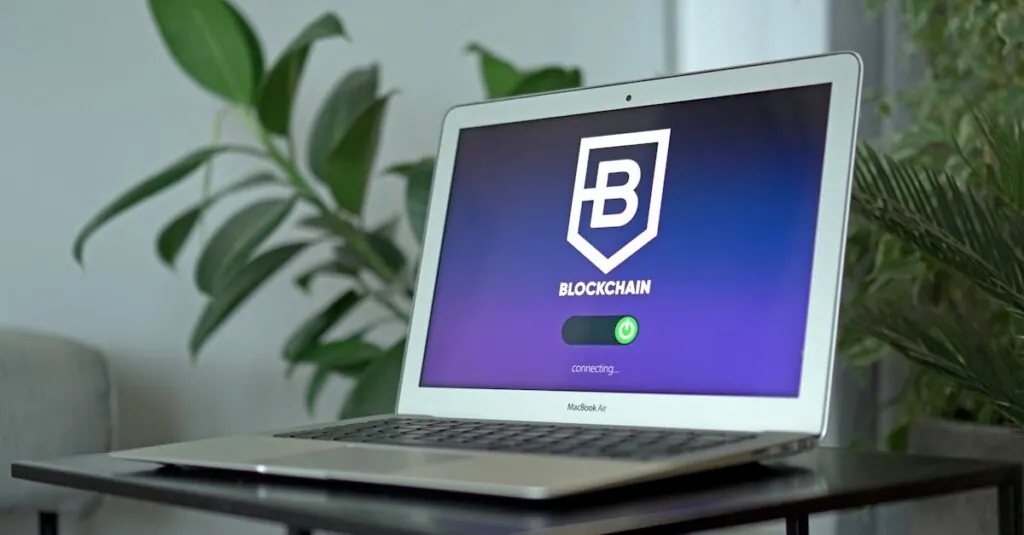In today’s world, working in pajamas while sipping coffee has become the new normal. But before you kick back and relax, let’s talk about securing that cozy remote work setup. After all, nothing ruins a good cup of joe like a cyberattack crashing your virtual office party.
A secure remote work environment isn’t just a luxury; it’s a necessity. With hackers lurking like uninvited guests at a party, it’s crucial to fortify your digital fortress. By implementing the right tools and practices, he or she can transform their home office into a safe haven, keeping sensitive data safe from prying eyes. So, grab that second cup of coffee and let’s dive into the essentials of creating a secure remote work setup that’ll have you working smart and worry-free.
Table of Contents
ToggleImportance of Secure Remote Work Setup
A secure remote work setup safeguards against cyber threats and protects valuable information. Implementing robust security measures is critical in today’s digital landscape.
Protecting Sensitive Information
Protecting sensitive information maintains trust between employers and employees. Secure remote work setups utilize encryption tools to protect data transmission. Employees must use strong passwords and enable two-factor authentication to enhance security. Regular updates to software also mitigate vulnerabilities that hackers exploit. Organizations can educate their teams about phishing scams to further safeguard sensitive information. Incorporating these practices fosters a culture of security that boosts overall productivity.
Maintaining Compliance Standards
Maintaining compliance standards is essential for legal and ethical business operations. Many industries have specific regulations regarding data security and privacy, such as GDPR and HIPAA. Remote workers must understand and adhere to these regulations to avoid severe fines and legal repercussions. Utilizing compliance software streamlines the monitoring of adherence to these standards. Regular training sessions keep employees informed about updates in compliance requirements. Establishing a secure remote work environment ensures organizations maintain their reputation while minimizing risk.
Key Components of a Secure Remote Work Setup
Creating a secure remote work setup hinges on several essential components that protect data and maintain productivity.
Secure Network Connections
Virtual Private Networks (VPNs) encrypt data, ensuring secure internet connections for remote workers. Utilizing a VPN minimizes exposure to threats and enhances privacy. Firewalls also play a vital role, blocking unauthorized access and filtering harmful traffic. Enabling encryption protocols, like TLS, can protect emails and other communications. Employees should avoid public Wi-Fi without additional security measures, as it heightens risks of data breaches. Regularly updating network equipment helps maintain strong defenses against evolving cyber threats.
Reliable Hardware and Software
Investing in reliable hardware is crucial for a secure remote work setup. Outdated devices often lack necessary security features, leaving vulnerabilities. Utilizing up-to-date operating systems and software reduces the potential for exploitation by cybercriminals. Antivirus programs should be regularly updated to detect and neutralize threats. Additionally, having multi-factor authentication for sensitive applications enhances protection. Conducting regular audits of hardware and software ensures compliance with security policies and regulations, strengthening the overall infrastructure of remote work environments.
Best Practices for Employees
Creating a secure remote work setup involves several key practices. Employees must prioritize their cybersecurity measures to protect sensitive information and maintain productivity.
Password Management
Strong passwords act as the first line of defense against unauthorized access. Use unique passwords for each account, ensuring they contain at least 12 characters, including letters, numbers, and symbols. Password managers can simplify managing multiple passwords by securely storing them. Change passwords regularly and avoid common phrases or easily guessed information. Implementing two-factor authentication provides an extra layer of security, prompting users for a secondary verification method during login. This dual approach significantly reduces the risk of breaches, keeping accounts and valuable data safe.
Regular Software Updates
Regular software updates enhance the security and functionality of devices and applications. Updates often include patches that address vulnerabilities, minimizing chances of exploitation. Enable automatic updates whenever possible to ensure prompt installation of the latest security features. Schedule periodic reminders for manual updates on software that doesn’t offer this option. In addition, out-of-date applications can pose risks in a remote work environment, as attackers often target them. Applying updates creates a more secure workspace and helps employees avoid potential disruptions caused by malware or cyberattacks.
Management Responsibilities
Management plays a pivotal role in establishing a secure remote work setup. They must prioritize employee training and the implementation of effective security policies.
Employee Training and Awareness
Employee training and awareness form the backbone of a secure remote work environment. Regular training sessions inform employees about emerging cybersecurity threats and reinforce best practices. Management should emphasize identifying phishing scams and recognizing suspicious activities. Utilizing simulations for hands-on training enhances engagement and retention. Regular updates on security protocols ensure that employees stay informed as threats evolve. By fostering a culture of security awareness, management not only protects sensitive information but also empowers employees to take ownership of their cybersecurity efforts.
Implementing Security Policies
Implementing robust security policies is crucial for safeguarding organizational data. Clear guidelines on password management, device usage, and internet security help set expectations. Policies should address the use of Virtual Private Networks (VPNs) and secure applications for workplace communication. Regular reviews of these policies ensure they remain relevant in the face of new threats. Furthermore, communication surrounding policy changes keeps employees aligned with security goals. This proactive approach strengthens the organization’s defense against cyberattacks while enhancing overall compliance with industry regulations.
Creating a secure remote work setup is vital for maintaining productivity and protecting sensitive information. By implementing the right tools and practices employees can work confidently without the fear of cyber threats.
Ongoing education about security risks and compliance with industry regulations is crucial for building a culture of security within organizations. Regular training sessions and updates on security protocols help keep teams informed and prepared.
Ultimately a proactive approach to cybersecurity not only safeguards the organization’s reputation but also fosters trust between employers and employees. With the right measures in place remote work can be both efficient and secure.






